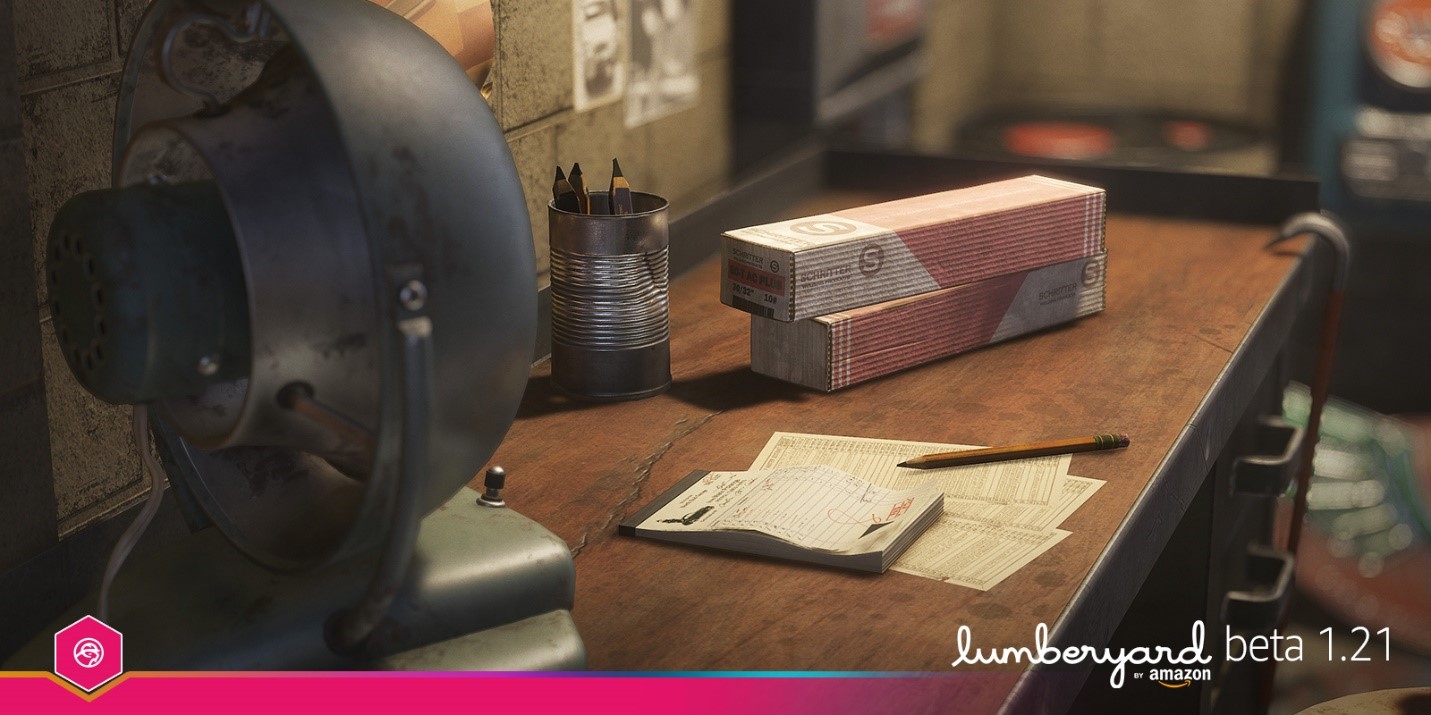AWS for Games Blog
Visual scripting updates, new animation features, and PhysX 4.1 in Lumberyard Beta 1.21 – Available Now
Today, we’re excited to release Amazon Lumberyard Beta 1.21.
Lumberyard Beta 1.21 is full of improvements we’ve made as a result of working directly with game studios and game developers in the thick of their development cycle. This latest version of Lumberyard has over 70 improvements, fixes, and features for designers, animators, programmers, and more. Click here to download Lumberyard 1.21.1 today.
Our goal with this release was to ship improvements as soon as they were ready–improvements that make your day-to-day game development easier and help you build beautiful, detailed worlds fast.
Here are some highlights:
- We continue to add new features and make workflow improvements to Script Canvas visual scripting to save you time. In this release, Script Canvas gets greater flexibility working with dynamic types, new comment and group presets so you can define color code comments and groups, and the ability to disable nodes so you can test different graph structures more quickly. We’ve also added three new nodes for increased functionality: Repeater, Switch, and Ordered Sequencer. (A few months ago we released the Project N.E.M.O sample to help you get started with Script Canvas. Check it out here.)
- The EMotion FX Animation Editor can now dynamically simulate physically-based secondary animation for your actors. This lightweight solver provides realistic looking motion for items like backpacks, holsters, and even long hair, as your actor moves. Using the Simulated Objects node, you can adjust an objects stiffness, gravity factor, colliders, and more.
- Lumberyard Beta 1.21 now uses NVIDIA’s PhysX 4.1. This latest version of PhysX boasts increased performance, stability, and accuracy.
- We’ve also refactored Lumberyard’s cross-platform architecture. We removed heavy reliance on cascading platform #ifdefs by reorganizing platform-specific code into a parallel directory hierarchy. This makes cross-platform feature development and maintenance easier and also significantly reduces the effort required to add new platforms to Lumberyard. (Note that public APIs were not changed as part of this refactor.)
You can read the full release notes here.
To help you get started and learn more about Lumberyard, we’re continually making updates to our tutorials. You can find them on YouTube.
You can also find Lumberyard on GitHub. Full source is available there, as well as the ability to contribute back to Lumberyard.
As always, we want to hear from you. We’ve launched new forums, so you can get in touch with us, send us your feedback, and interact with the Lumberyard community there. Check them out here.
